
Tony Howard takes us back to the post-war explosion of rock climbing, taking a look at the gear, the climbers and the climbs, with a particular focus on the Saddleworth - Chew region and the first guidebook to the area.
The Gear
In the late 1940s and through the '50s, climbing in Britain was undergoing a major revolution in both participants and techniques. The post-war population explosion unleashed unprecedented numbers of ragged rebels into the hills to take up a sport that, traditionally, had been the privileged domain of the wealthier upper classes. Full of the vigour and aggressiveness of youth, old standards of climbing difficulty were surpassed by increasing numbers of people and the old gear was seen to be totally inadequate for the new techniques and situations. Hemp ropes disappeared rapidly from the scene after nylon ropes were used on Everest in 1953 and the clink of tricouni on rock was ringing its death knell. Plimsolls, then kletterschuhe took over to be replaced by PAs in the late '50s. Hemp, then nylon waistlines and steel carabiners (heavy, and often with sharp, thumb-cutting gates and of unknown strength) were in common use, whilst lightweight alloy carabiners only became available in the early '60s.
Until the late fifties, protection was from rope slings, jamming their knots in cracks or threading the slings round inserted pebbles in cracks or round natural chockstones or spikes. This was soon improved to include the use of assorted sizes of hexagon nuts threaded on slings which gave much greater protection possibilities. It was 1963 before the waistline was replaced by a waist belt, one design being made in Sheffield by Brian 'Tanky' Stokes, and the other (later known as the Troll Mark 2) by me in Greenfield. Meanwhile, two other lads from Saddleworth's recently formed Rimmon Mountaineering Club, Alan Waterhouse and Paul Seddon were soon independently making what were amongst the first ever ranges of alloy nuts. Alan and I later joined forces after the Rimmon ascent of the Troll Wall in Norway in 1965, to form Troll Climbing Equipment and Paul Seddon joined a few years later with his Parba Equipment which now also included T chocks for wider cracks.
The next big gear revolution came in 1970 when Troll (then based in Diggle but soon moving to Uppermill) invented the world's first sit-harness – the Whillans – in conjunction with the man himself, Don Whillans, who requested it for for the Annapurna expedition. Thus inspired, Troll went on to create the Mark 5 climbing sit-harness in 1979, a design which has been used as the basis for just about every harness around the world ever since; it was also Troll that made the climbing world's first sewn slings around this time. Prior to these developments, falling off, often with sparse and dubious protection and no harness wasn't much fun. The tenet of the day was "The leader never falls", though I took a couple of big ones both on loose rock (we always climbed ground-up, no pre-inspection or cleaning). The first was on what became known as Tony's Terror, having a laugh at my expense for falling to within inches of the deck together with a detached overhang. The other route was Delilah (a fickle lover) where I repeated the performance and Tony Jones grabbed the lead and finished it off, so I missed my chance. Such is life. Which reminds me, back in 1957 I think, whilst aid climbing on wedges I fell from close to the top of Calamity Crack and landed safely in a snowdrift. 'Oward's luck, as Bruce Mills, was fond of saying!

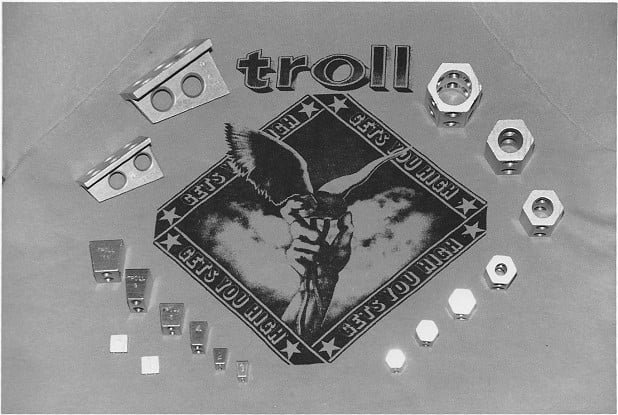
The Climbers
Then, as now, only the bold ventured far into the unknown, but standards were soaring: as far back as the late 1940s, Joe Brown, Don Whillans, 'Slim' Sorrel, Wilf White, Nat Allen, and others from Manchester were pushing the boundaries of the possible. They were frequent early visitors to Chew, originally operating as The Valkyrie but destined to become the Rock and Ice in 1951. Their best contributions in Chew are the awesome Hanging Crack on Dovestones Edge and a superb collection of climbs on Wimberry, though the Dovestones Quarry Girdle "one of the hardest undertakings on gritstone" was equally notorious. Sadly the latter has now been lost in oblivion as much of the quarry – now often referred to as Death Quarry – is no longer in the guidebook and has fallen out of favour (a pity, it was a great place).
Other early Chew regulars included the Chew Valley Cragsmen such as Gray West, Mick Roberts, Jimmy Curtis, Stan Wroe and Roy Brown were also adding new routes on the crags, but even so, climbers were still rarely seen when a younger group of Saddleworth lads who were to form The Rimmon Mountaineering Club began to explore easy ways up their local cliffs such as Alderman and Dovestones in the early '50s. It was on one such escapade that 'Olly' Whitehead and I found a Laddow guidebook at Alderman and discovered that Saddleworth actually had 'real' climbs. We didn't even know there were such things as climbing guidebooks, but much to our surprise, we discovered we had actually done some of the easier routes. This inspired Barry Kershaw, a friend of Olly's, to 'borrow' a rope off the back of a wagon, and they were ready to climb! Paul Seddon, Brian Hodgkinson, and the inseparable trio of Tony Jones, Jeff Sykes and Brian 'Smiler' Woods soon joined the scene as did Alan Waterhouse and Frank Whitehead who lived at weekends in an old glider body adjacent to the now long-gone Buckley's Café not far from Wimberry and just above 'Forty Row'.
They soon got to know the Chew Valley Cragsmen who were their initial inspiration. Roy Brown in particular soon became a lifelong friend and mentor. At the time, Roy lived in a converted hen hut at Fernlea, before moving to a nearby cottage at Whitelea, costing ten bob (50p) a week. By the late 1950s, the Rimmon Mountaineering Club had been formed and with little money to be had for transport, hitching being the only regular option, new routes were soon being done around Saddleworth. A glance through the first ascent lists shows a surge of activity from the mid-'50s through to the mid-'60s. Almost all the new routes were done by the Rimmon and the Chew Valley Cragsmen, the latter soon becoming the Manchester Gritstone, though Graham West and Mick Roberts, two of the decade's greatest Moorland Grit pioneers were tragically killed in a huge, unprecedented avalanche in Wilderness Gully in January 1963, ironically one of the best winters of that period for snow and ice climbing.
Others active in Chew during the early '60s included the Alpha and the 'Tans' climbing clubs from further south in the Peak District, with climbers such as Richard McHardy, Al Parker and Pete Bamfield leaving their mark. Malc Baxter, Dave Crilly, Stan Wroe and other members of the Manchester Grit were also now climbing in Chew and on the Longdendale cliffs, sometimes with the Rimmon lads which now included it's own new hotshots such as Tony Nicholls, Bill Tweedale, Rob Holt and, later, Adrian Garlick, Brian Roberts and his younger brother, 'Speedy', a real ace on rock.
The Climbs
New routes were being discovered regularly in what was still – as it is today - a comparatively quiet part of the Peak. Wilderness and Dovestones Lower Left were Chew Valley Cragsmen/Manchester Grit terrain, but the climbs on Alderman, Pots and Pans, Den Lane and Pule Hill were almost completely Rimmon routes, whilst Dovestones Main Quarry, Standing Stones and Charnel Stones became Rimmon playgrounds. One day in 1963, the Rimmon put up fifty-two new routes on Ravenstones – as the 1988 guide said, "Beat that". Dave Cook later wrote in his article True Grit in Games Climbers Play, "There was a time in the late 'sixties when it looked as if the ethos and traditions of gritstone were taking over everywhere. The big jamming fists, and the big jammed mouths of the Rock and Ice, the Alpha, the Black and Tans, the YMC and the Rimmon, (he forgot the Manchester Grit) proselytised by word and deed all over Britain, brainwashing everyone else into an acceptance of inferiority". Testosterone years indeed!
A few of the best routes in the upper grades in the 1965 guide to Saddleworth - Chew
| 1923 | Waterfall Climb | VD | George Bower |
Dovestones Quarry |
| Pre-1924 | Nasal Buttress | HS 4b | George Bower | Dovestones |
| 1924 | Wedgewood Crack | VS 4c | George Bower, Albert Wood | Ravenstones |
| 1937 | Routes 1 & 2 | HS 4b & VS 5a | L Kiernan & F Hewitt | Wimberry |
| 1938 | Pulpit Ridge | E1 5a | Arthur Birtwistle | Ravenstones |
| 1948 | Freddie's Finale | HVS 5b | Joe Brown | Wimberry |
| 1948 | The Trident | HVS 5b | Joe Brown & Rock & Ice team | Wimberry |
| 1948 | Blue Lights | HVS 5b | Don Whillans &/or Joe Brown | Wimberry |
| Pre-1950 | Ornithologists Corner | VS 5a | Joe Brown & Rock & Ice team | Wimberry |
| Pre-1950 | Coffin Crack | VS 4c |
Joe Brown & Rock & Ice team |
Wimberry |
| 1950 | Nameless One | VS 4b | Roy Brown, Jimmy Curtis | Rob's Rocks |
| Early 1950s | Camel's Arete | HVS 5a | Graham West | Wilderness |
| 1950s | Hanging Crack | E2 5b | Joe Brown | Dovestones |
| 1950s | Mike's Meander | VS 4c | Rock & Ice | Dovestones Quarry |
| 1956 | Great Slab | VS 4b | Tony Howard | Alderman |
| 1957 | Ace of Spades | HVS 5a | Joe Brown |
Dovestones Quarry |
| 1957 | Tiny Tim | VS 4c | Joe Brown |
Dovestones Quarry |
| 1957 | Sweatyman | HVS 5a | Graham West | Shooters Nab |
| 1957 | Temptation Crack | VS 4c | Tony Howard |
Charnel Stones |
| 1957 | Three Notch Slab | VS 4c | Barry Kershaw |
Den Lane |
| 1957 | Double Overhangs | VS 4c | Barry Kershaw |
Den Lane |
| 1958 | Tartarus | VS 4c | Tony Howard |
Den Lane |
| 1958 | 'Odges 'Orror | HVS 5b | Brian Hodgkinson |
Den Lane |
| 1958 | Womanless Wall | VS 4c | Tony Howard | Standing Stones |
| 1959 | Epitaph Corner | VS 4c | Al Parker/R A Brayshaw | Dovestones Quarry |
| 1959 | Midgebite Crack | HVS 5a | Tony Howard | Den Lane |
| Pre 1960 | Dovestones Quarry Girdle | HVS 5a | Rock & Ice | Dovestones Quarry |
| 1960 | Fairy Nuff | VS 4c | Paul Seddon |
Standing Stones |
| 1960 | Ocean Wall | E1 5b | Malc Baxter |
Standing Stones |
| 1960 | Slipoff Slab | HVS 4c | Tony Howard | Dovestones |
| 1960 | Mammoth Slab | HVS 4c | Graham West |
Dovestones |
| 1960 | Delilah | E1 5b | Tony Jones |
Pule Hill |
| 1960 | Maggie | HVS 5a | Tony Jones | Dovestones |
| 1960 | Feb | VS 4b, 5a | Brian Hodgkinson, Howard & Seddon |
Dovestones Quarry |
| Early 1960s | Cuspidor | VS 5a/b | Tony Howard | Shooters Nab |
| Early 1960s | Jericho Wall Direct | HVS 5a | Tony Howard/Paul Seddon | Dovestones Quarry |
| 1961 | Rizla | HVS 5a | Paul Seddon/Tony Howard | Ravenstones |
| 1961 | The Nose | HVS 5b | Tony Howard |
Rob's Rocks |
| 1961 | Wall & Bulge | E2 5b | Malc Baxter | Wimberry |
| 1962 | The Popple | HVS 5a | Malc Baxter |
Den Lane |
| 1962 | The Ratcher | HVS 5b | Malc Baxter |
Pule Hill |
| 1962 | Scoop Arete | E1 5a | Paul Seddon |
Den Lane |
| 1963 | The Wilter | E1 5b | Howard, Jones & Sykes |
Den Lane |
| 1963 | Trinnacle West | E1 5b | Paul Seddon | Ravenstones |
| 1963 | Rimmon Wall | HVS 4c | Tony Howard | Ravenstones |
| 1963 | The Tombstone | HVS 5a | Tony Jones |
Charnel Stones |
| Pre 1965 | Kvick Chimney | VS 4c | Probably Malc Baxter | Wimberry |
| Pre 1965 | Scoop Wall | VS 4c | Tony Jones | Pule Hill |
| Pre 1965 | Square Buttress | VS 4c | Tony Howard | Pule Hill |
and I will include one after the '65 guide as some doubted it's ascent, but I was there:
| 1966 | Overlapping Wall | E1 6b | Tony (Nick) Nicholls | Pule Hill |
As a matter of interest, Nick also did the second ascent of Arthur Dolphin's Wall of Horrors at Almscliffe a few years previously. He also came within inches of doing the first ascent of White Slab Direct on Cloggy before falling the full length of the pitch - I know as I was belaying! And in 1965 he led one of the hardest pitches on the Troll Wall (The Nick) but was unable to join the final ascent as his hands were trashed.

Tony Howard is the author of 'Troll Wall' and 'Quest into the Unknown', both from Vertebrate. Also climbing and trekking guidebooks to the Peak District, Norway, Jordan and Palestine.
- The First Ascent of the Troll Wall 15 Feb, 2011



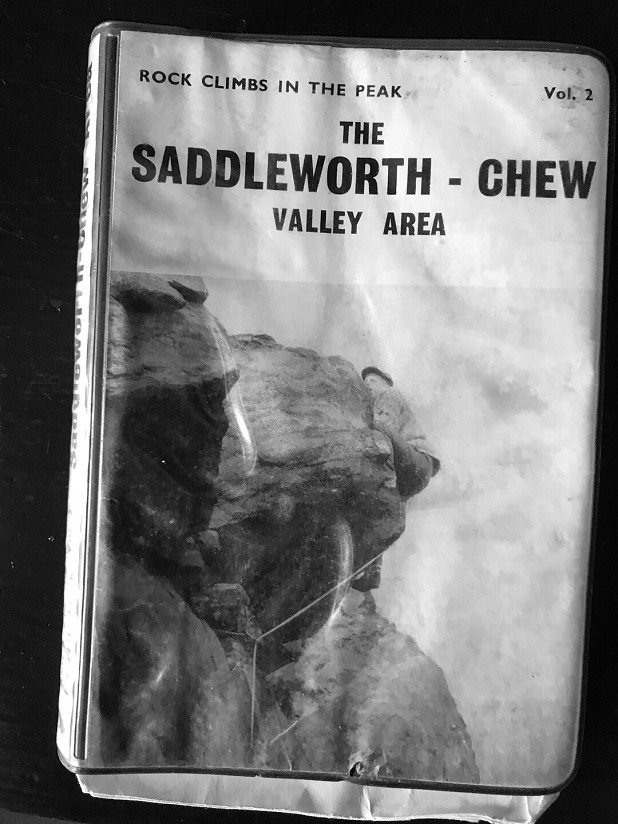
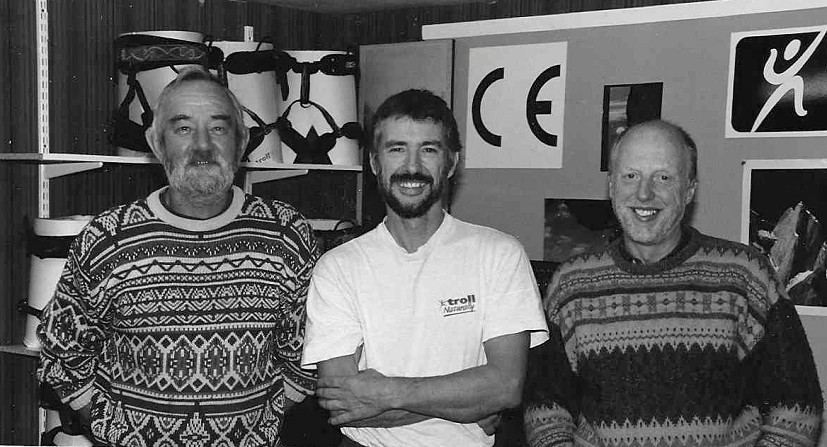

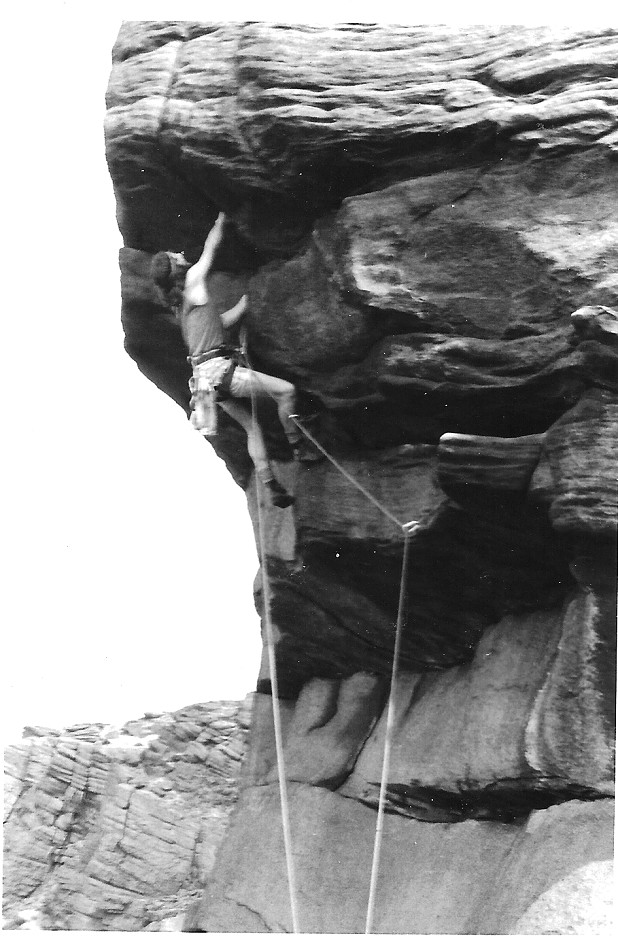
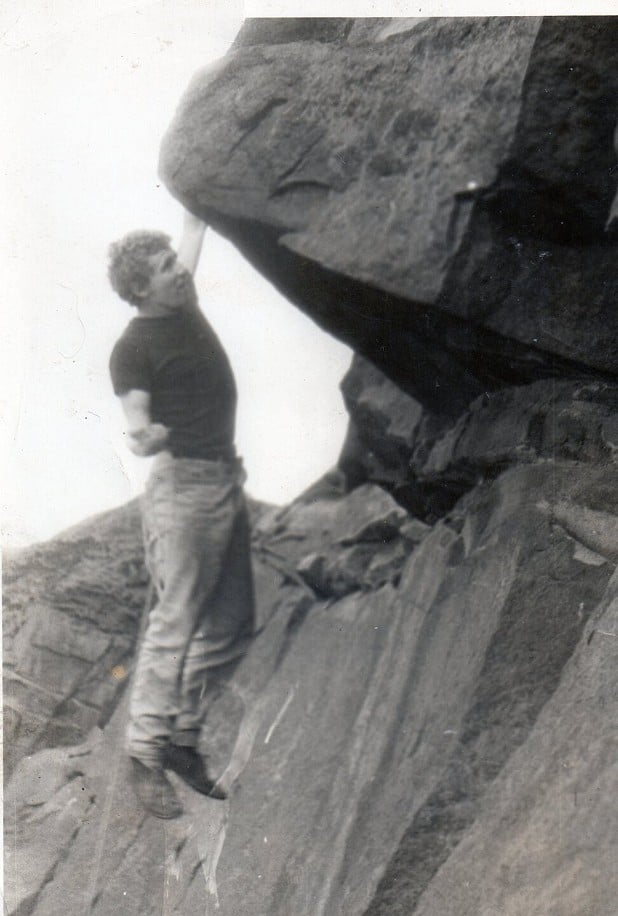
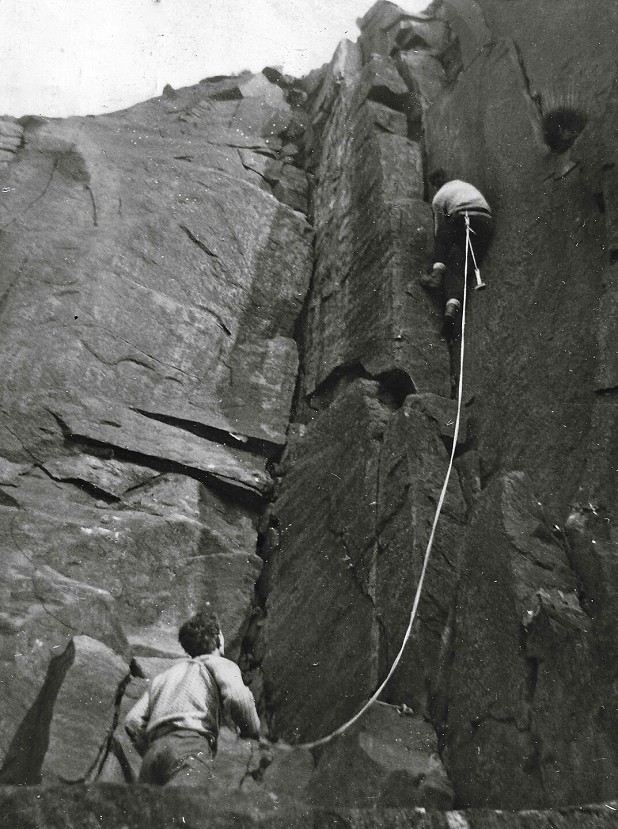
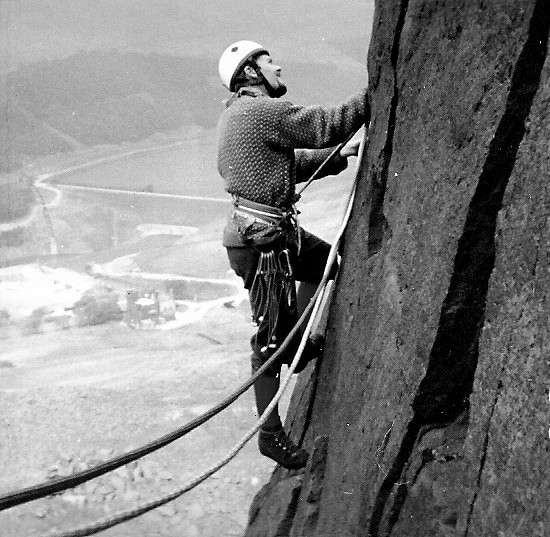
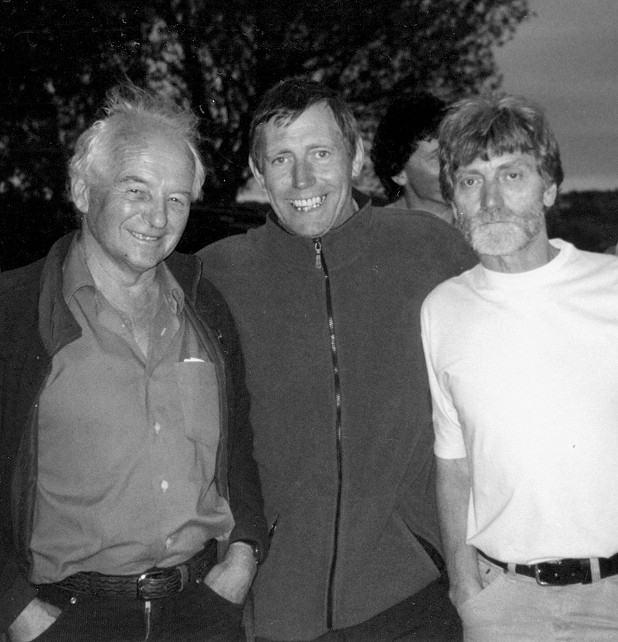
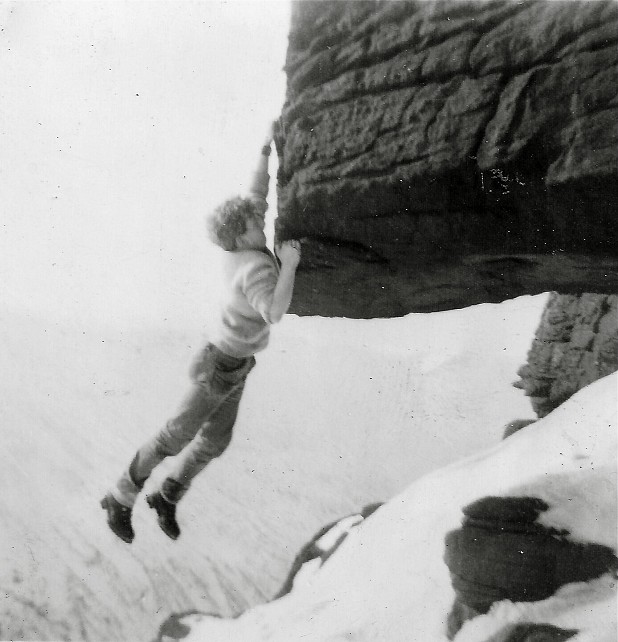
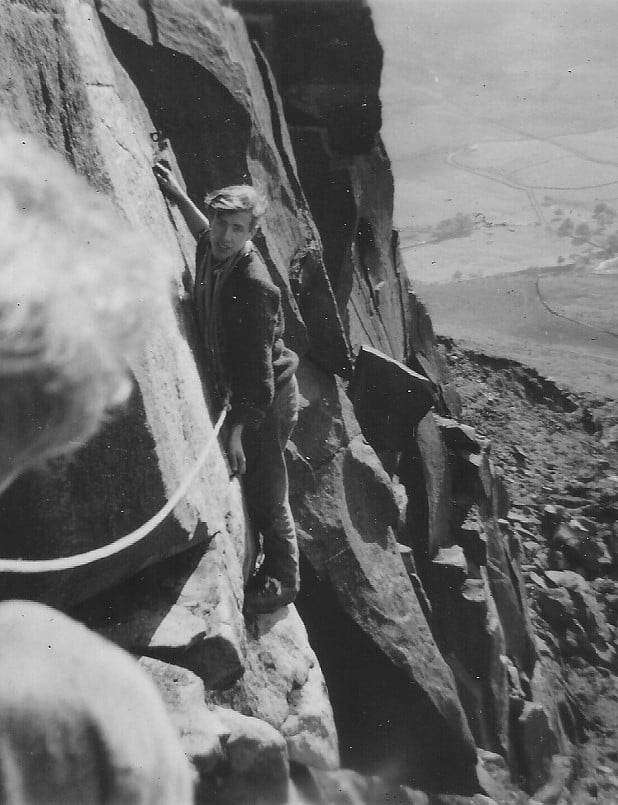
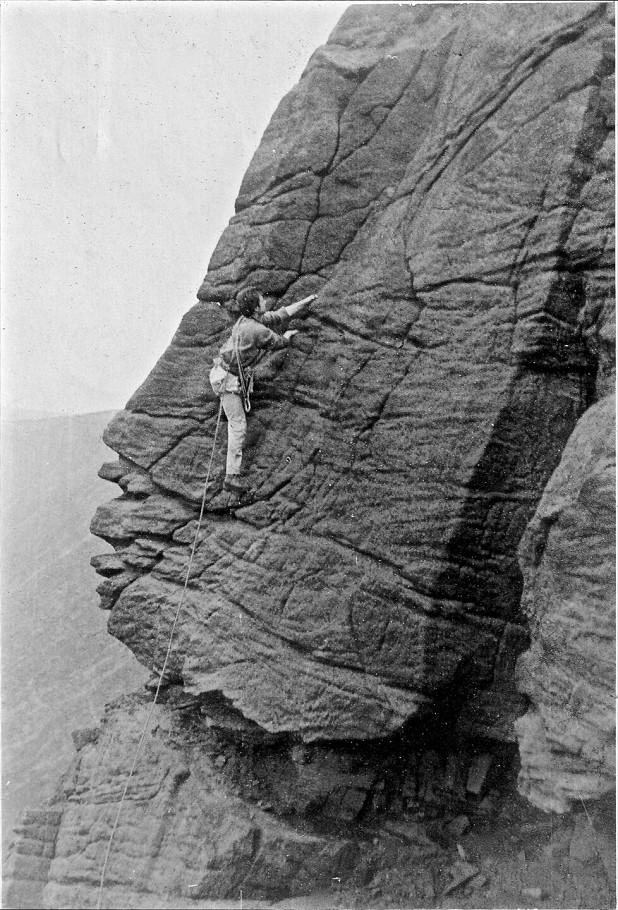
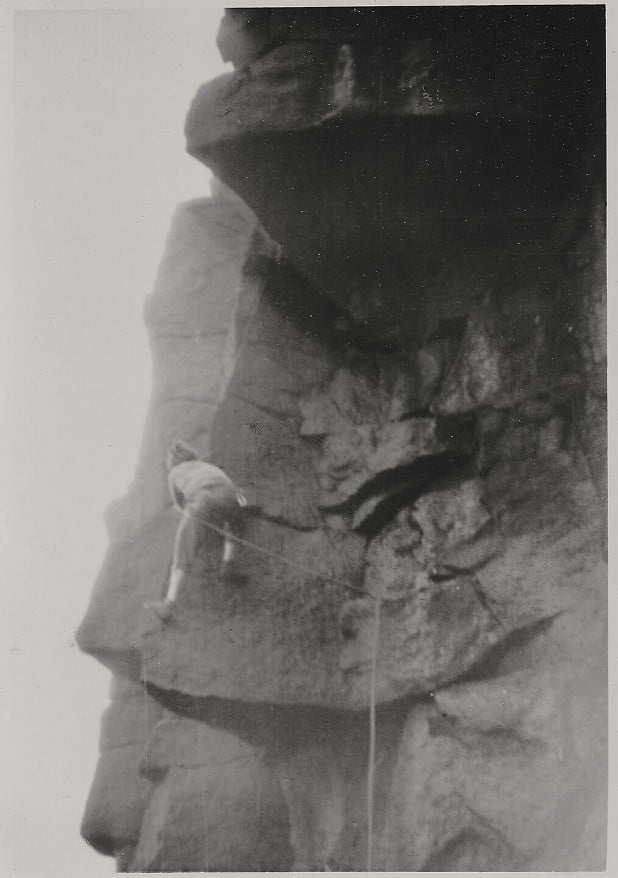
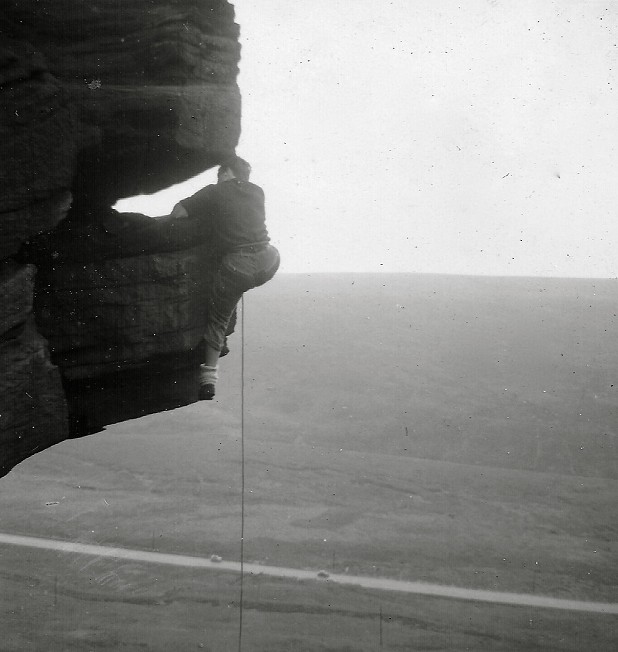

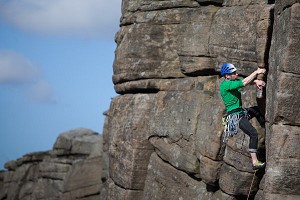

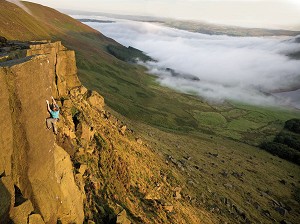
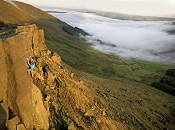








Comments
Arthur Dolphin didn’t do the first ascent of Wall of Horrors. That was down to one Alan Austin.
I’ll get my coat
Superb article! Thanks for taking the time to write it Tony, would love to see more decent historical stuff on UKC.
This was one of the first guidebooks I bought in the late 1960's. Took me climbing to Dovestones Quarry, Standing Stones, and a general nosey round other crags. I though it was one of the old ones I had kept for nostalgic reasons but a quick search has failed to find it.
John Gresty
Loved the article really great to know the history behind all these areas where o climb.